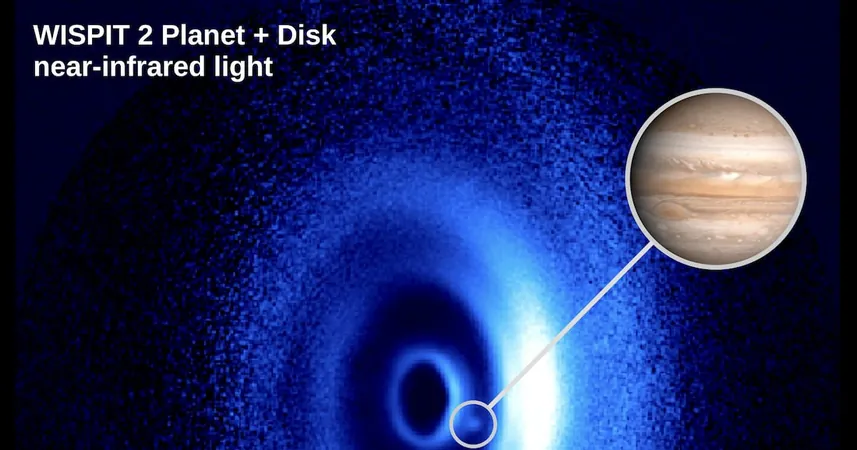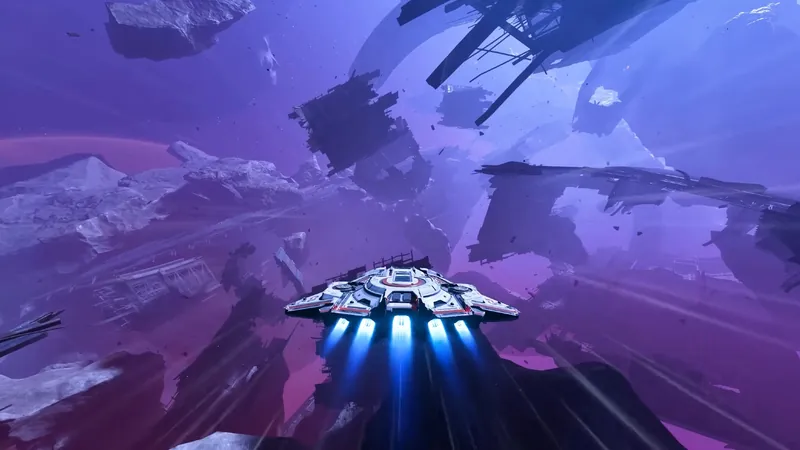
Asteroid Bennu: A Cosmic Treasure Trove of Ancient Stardust and Secrets from Beyond
2025-08-25
Author: Ming
Asteroid Bennu: A Time Capsule from the Cosmos
The near-Earth asteroid Bennu has astonished scientists with its stunning revelations: it harbors stardust that predates our solar system and contains organic materials and ice that originated from interstellar space. These groundbreaking findings come from three new studies analyzing samples collected by NASA's OSIRIS-REx mission, which returned a bounty of material from Bennu in 2023.
Unearthed Treasures from 4.6 Billion Years Ago
Researchers have been meticulously examining the samples since their arrival on Earth. The insights gained shed light on the conditions of the universe before the formation of our solar system 4.6 billion years ago, while revealing more about the asteroid's mysterious parent body.
The Violent Birth of Bennu
The first study, published in Nature Astronomy, uncovered that Bennu's ancestor met a violent end in a catastrophic collision. This ancient body, before its disintegration, contained materials from various cosmic environments: close to the sun, far within our solar system, and even from the vast expanse of interstellar space.
Researchers determined this by analyzing the isotopes present in Bennu's dust. Each element type traced back to distinct origins, enabling scientists to reconstruct the asteroid's complex history. Ann Nguyen, a leading researcher from NASA's Johnson Space Center, stated, "All of these constituents were transported great distances to the region where Bennu's parent asteroid formed."
A Legacy of Chaos and Creation
Following its violent disassembly, fragments of the parent body did not simply drift apart; they reassembled and likely underwent this process multiple times. According to co-lead author Jessica Barnes of the University of Arizona, "We think this parent body was struck by an incoming asteroid and smashed apart before eventually spawning Bennu."
Comparative Insights: Bennu vs. Ryugu
The second study published in Nature Geoscience delves into the comparisons between Bennu, primitive meteorites, and the asteroid Ryugu, which was studied by Japan's Hayabusa2 mission. While the parent asteroids of both Bennu and Ryugu likely originated from a similar distant region, notable differences in their compositions suggest that this area evolved over time.
NASA officials noted that Bennu's materials underwent significant transformations due to their interactions with water. Tom Zega, a professor at the University of Arizona, highlighted that the parent asteroid accumulated ice and dust, which eventually melted, leading to the complex mineral composition we observe today.
Evidence of Cosmic Impact
A third paper, also published in Nature Geoscience, identified significant evidence of micrometeorite impacts on Bennu. These tiny rocks have left their mark, creating microscopic craters and molten rock traces on the surface. Lindsay Keller from NASA remarked that the rate of surface weathering on Bennu is happening faster than estimates suggested, reshaping our understanding of its geological activity.
Though Bennu itself doesn't support life, the findings offer critical insights into the early conditions of our planet, shedding light on how life may have first emerged.
Conclusion: A Journey into Our Origins
As scientists continue to unravel the mysteries surrounding Bennu, this ancient asteroid not only serves as a fascinating relic from the early solar system but also as a key to understanding our cosmic past. With each discovery, we come one step closer to comprehending the origins of life and the universe around us.


 Brasil (PT)
Brasil (PT)
 Canada (EN)
Canada (EN)
 Chile (ES)
Chile (ES)
 Česko (CS)
Česko (CS)
 대한민국 (KO)
대한민국 (KO)
 España (ES)
España (ES)
 France (FR)
France (FR)
 Hong Kong (EN)
Hong Kong (EN)
 Italia (IT)
Italia (IT)
 日本 (JA)
日本 (JA)
 Magyarország (HU)
Magyarország (HU)
 Norge (NO)
Norge (NO)
 Polska (PL)
Polska (PL)
 Schweiz (DE)
Schweiz (DE)
 Singapore (EN)
Singapore (EN)
 Sverige (SV)
Sverige (SV)
 Suomi (FI)
Suomi (FI)
 Türkiye (TR)
Türkiye (TR)
 الإمارات العربية المتحدة (AR)
الإمارات العربية المتحدة (AR)